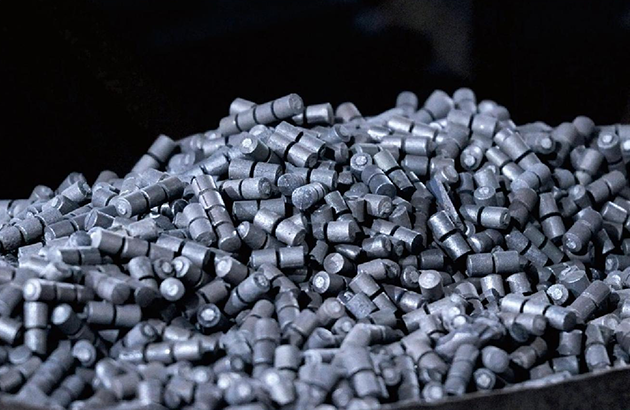
+86 0563-4309002
+86 17705630058
vickyw@gaoxincn.com
The Role of Grinding Balls in Cement and Mining Production Lines
How Precision-Engineered Grinding Media Enhance Industrial Throughput and Cost Efficiency
Grinding is a critical operation in cement manufacturing and mineral extraction industries. The efficiency, productivity, and cost-effectiveness of these production lines largely depend on the performance of one small yet powerful component—the grinding ball. Whether used in ball mills or semi-autogenous grinding (SAG) mills, grinding balls are essential for material size reduction, a key step in both cement processing and ore beneficiation.
This article explores the vital role of grinding balls in cement and mining production lines, analyzing their function, material characteristics, wear behavior, impact on energy consumption, and how they help optimize industrial efficiency.
Grinding balls are spherical media made from steel, iron, or ceramic materials used in grinding mills to pulverize raw materials. They are selected based on several parameters:
Material hardness and toughness
Corrosion and abrasion resistance
Ball size and density
Operating conditions (wet/dry, temperature, load)
High-performance grinding balls are engineered to deliver consistent impact force and surface wear resistance, supporting uninterrupted milling operations.
Cement production begins with the grinding of raw materials—mainly limestone, clay, and other minerals—into fine powder. Grinding balls are used extensively in:
Raw mills: To crush limestone and other input minerals into a homogenous mix.
Clinker mills (finish grinding): To reduce clinker and additives into fine cement powder.
Slag grinding: For incorporating industrial waste by-products into cement blends.
Fineness Control: High-quality grinding media ensures a uniform particle size distribution, essential for cement strength and setting behavior.
Reduced Power Consumption: Efficient grinding balls optimize kinetic energy transfer, lowering electricity usage per ton of cement.
Low Wear Rate: Durable balls reduce media consumption and mill liner wear, extending maintenance intervals.
Consistency: Stable grinding media minimizes product variability across production batches.
High-chromium cast balls: Superior wear resistance, suitable for clinker and finish grinding.
Forged steel balls: High toughness, ideal for raw material pre-grinding.
Low-chromium or alloy cast balls: Used for lower-cost, general-purpose grinding tasks.
In mining operations, grinding balls are vital in reducing extracted ore to fine particles for further processing. This includes:
Liberation of valuable minerals (e.g., gold, copper, iron)
Preparation for flotation or leaching
Grinding for pelletization (iron ore)
Ball mills: Perform fine grinding of ore.
SAG mills: Use both ore and grinding media for primary ore breakdown.
Rod mills: Sometimes used as a preliminary grinding stage.
Increased Throughput: High-performance grinding balls allow for faster ore processing and higher tonnage.
Reduced Energy Use: Well-engineered balls enhance grinding kinetics, reducing mill run time and energy per ton.
Improved Recovery Rates: Uniform grinding aids in better mineral liberation and efficient recovery in flotation or chemical extraction.
Minimized Downtime: Durable balls lower breakage rates and reduce shutdowns for mill relining.
Forged high-carbon steel balls: Offer exceptional impact toughness and wear resistance.
High-chromium cast balls: Deliver long life in abrasive ore environments.
Martensitic alloy balls: Balance wear resistance and toughness in medium-hard ores.
Grinding balls are constantly exposed to hard, abrasive particles. Low-quality balls wear out faster, causing:
Irregular grinding performance
Increased iron contamination
Frequent recharging needs
High-quality balls resist deformation, spalling, and breakage, offering superior lifecycle performance.
Especially in cement kilns and some mining flotation processes, grinding balls must withstand elevated temperatures and chemically reactive environments. Chromium-rich and alloyed balls are engineered to perform reliably under these conditions.
Grinding consumes a significant share of energy in cement (up to 40%) and mining (up to 50%) plants. Efficient balls reduce power draw by optimizing impact efficiency, ball trajectory, and grinding action.
An optimal mix of ball sizes ensures efficient grinding:
Larger balls: Break coarse particles.
Smaller balls: Refine fine particles for uniform size.
Incorrect sizing leads to:
Inefficient grinding
Mill overloading or underperformance
Uneven wear on liners and media
Custom ball gradation improves mill efficiency and material throughput.

Modern production uses quenching and tempering to improve hardness uniformity and control internal stress.
Developing new alloys with balanced carbon and chromium ratios enhances both wear life and impact resistance.
Smart mills with digital sensors now monitor ball wear, trajectory, and load, optimizing media usage in real time.
Premium grinding balls last longer, reducing:
Replenishment costs
Operational downtime
Liner replacement cycles
Uniform ball quality ensures consistent product quality and reduces process variability.
Though high-quality balls may have a higher upfront cost, they offer better ROI through:
Lower wear rates
Higher throughput
Reduced energy consumption
Grinding media impact sustainability through:
Steel consumption: Longer-lasting balls reduce raw material use.
Energy efficiency: Lower power usage per ton of output.
Waste generation: Reduced spalling and breakage minimizes solid waste.
Environmentally responsible operations are increasingly selecting energy-efficient, recyclable grinding balls.
In both cement and mining production lines, grinding balls are essential for efficient material processing. Their quality directly influences:
Product fineness and consistency
Equipment lifespan and maintenance needs
Energy usage and overall operational costs
High-quality grinding balls improve productivity, reduce operational risks, and help meet modern demands for cost-effectiveness and environmental responsibility. As industries evolve, investing in advanced grinding media remains one of the most impactful decisions for long-term production success.
Comment
(0)